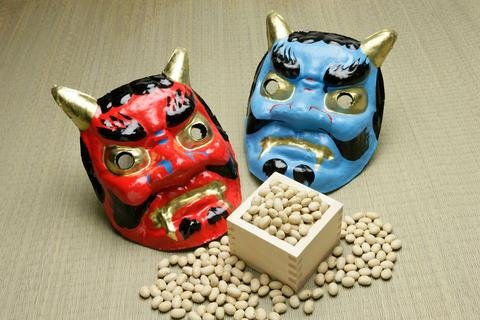Contents
ToggleIn short
Setsubun (節分) is the day before the beginning of spring in the old calendar. Japan. The name literally means "seasonal division", referring to the day just before the first day of spring in the traditional calendar. Setsubun is now generally held on February 3 (in 2021, it was February 2), with the following day – the first day of spring in the old calendar – known as Risshun (立春). Setsubun and Risshun are celebrated each year as part of the Spring Festival (Haru matsuri (春祭)) in Japan.

Setsubun, the ancient Japanese New Year
In its association with the Lunar New Year, Setsubun, while not the official New Year, was considered similar in its ritual and cultural associations of "cleansing" the previous year at the beginning of the new spring season. Setsubun was accompanied by a number of rituals and traditions held at various levels to drive away the bad fortune of the previous year and evil spirits for the coming year.
Setsubun has its origins in tsuina (追儺), a custom chinese Introduced to Japan in the 8th century. Although originally practiced as part of individual household traditions in preparation for the first season of the new year, Setsubun is now primarily observed at various Shinto shrines, Buddhist temples, and geisha communities.
The main ritual associated with the observance of Setsubun is the mameki (豆撒き, "bean scattering"); this ritual sees roasted soybeans (known as fukumame (福豆, "fortune beans")) either thrown out the front door or onto a family member wearing an oni (demon or ogre) mask while shouting "Devils out! Fortune in!" (鬼は外! 福は内!, Oni wa soto! Fuku wa uchi!), before slamming the door.
Beans are believed to symbolically purify the home by driving away evil spirits that bring misfortune and ill health. Then, for good luck, it is customary to eat roasted soybeans, one for each year of one's life (kazoedoshi), plus one extra for good luck for the year.
The custom of mamemaki first appeared in the Muromachi period and is usually practiced either by a male member of the household born in the corresponding zodiac year for the new year (toshiotoko (年男)) or by the male head of the household.
Although still a fairly common household practice, many people also or instead attend a shrine or temple's spring festival, where the practice of mamemaki is performed; in some areas, such as Kyoto, it is a dance performed by an apprentice geisha, after which the apprentices themselves throw packets of roasted soybeans to the crowd.
In other areas, priests and guests throw packets of roasted soybeans, some wrapped in foil or silver, small envelopes with money, sweets, candies and other prizes.
Social networks
Picture
